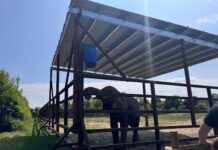- Rishi Sunak has announced that the Self-Employment Income Support Scheme will be extended, with those eligible able to claim a second and final grant capped at £6,570
- The Chancellor also outlines further details on the extension of the Coronavirus Job Retention Scheme, including improved flexibility to bring furloughed employees back part time in July, and a new taper requiring employers to contribute modestly to furloughed salaries from August
- Both schemes are UK wide.
Those eligible under the Self-Employment Income Support Scheme (SEISS) will be able to claim a second and final grant in August. The grant will be worth 70% of their average monthly trading profits, paid out in a single instalment covering three months’ worth of profits, and capped at £6,570 in total.
The Chancellor also set out more details on how the Coronavirus Job Retention Scheme (CJRS) will continue to support jobs and business as people return to work, following the announcement of an extension of the scheme on 12 May, 2020.
From 1 July, businesses will be given the flexibility to bring furloughed employees back part time. This is a month earlier than previously announced to help support people back to work. Individual firms will decide the hours and shift patterns their employees will work on their return, so that they can decide on the best approach for them – and will be responsible for paying their wages while in work.
From August, the level of government grant provided through the CJRS will be slowly tapered to reflect that people will be returning to work. That means that for June and July, the government will continue to pay 80% of people’s salaries. In the following months, businesses will be asked to contribute a modest share, but crucially individuals will continue to receive that 80% of salary covering the time they are unable to work.
The scheme updates mean that the following will apply for the period people are furloughed:
- June and July: The government will pay 80% of wages up to a cap of £2,500, as well as employer National Insurance (ER NICS) and pension contributions. Employers are not required to pay anything.
- August: The government will pay 80% of wages up to a cap of £2,500. Employers will pay ER NICs and pension contributions – for the average claim. This represents 5% of the gross employment costs the employer would have incurred had the employee not been furloughed.
- September: The government will pay 70% of wages up to a cap of £2,187.50. Employers will pay ER NICs and pension contributions and 10% of wages to make up 80% total up to a cap of £2,500. For the average claim, this represents 14% of the gross employment costs the employer would have incurred had the employee not been furloughed.
- October: The government will pay 60% of wages up to a cap of £1,875. Employers will pay ER NICs and pension contributions and 20% of wages to make up 80% total, up to a cap of £2,500. For the average claim, this represents 23% of the gross employment costs the employer would have incurred had the employee not been furloughed.
“Our top priority has always been to support people, protect jobs and businesses through this crisis. The furlough and self-employment schemes have been a lifeline for millions of people and businesses,” said Chancellor Rishi Sunak.
“We stood behind Britain’s businesses and workers as we came into this crisis and we stand behind them as we come through the other side.
“Now, as we begin to re-open our country and kickstart our economy, these schemes will adjust to ensure those who are able to work can do so, while remaining amongst the most generous in the world.
“Employers will be required to submit data on the usual hours an employee would be expected to work in a claim period and actual hours worked. Employees who believe they are not getting their 80% share can also report any concerns to the HMRC fraud hotline. HMRC will not hesitate to take action against those found to be abusing the scheme.”
Further information
SEISS
- Individuals can continue to apply for the first SEISS grant until 13 July. Under the first grant, eligible individuals can claim a taxable grant worth 80% of their average monthly trading profits, paid out in a single instalment covering three months’ worth of profits, and capped at £7,500 in total. Those eligible have the money paid into their bank account within six working days of completing a claim.
- Applications for the second grant will open in August. Individuals will be able to claim a second taxable grant worth 70% of their average monthly trading profits, paid out in a single instalment covering three months’ worth of profits, and capped at £6,570 in total.
- The eligibility criteria are the same for both grants, and individuals will need to confirm that their business has been adversely affected by the coronavirus. An individual does not need to have claimed the first grant to receive the second grant. For example, they may only have been adversely affected by COVID-19 in this later phase. Further guidance on the second grant will be published on 12 June.
CJRS:
- Around 40% of employers have not made a claim for employer NICs costs or employer pension contributions and so will be unaffected by the change in August if their employee’s employment patterns do not change.
- Many smaller employers have some or all of their employer NIC bills covered by the Employment Allowance so will not be significantly impacted.
- Around 25% of CJRS monthly claims are below the thresholds where employer NICs and automatic enrolment pension contributions are due, and so no employer contribution would be expected for these payments to furloughed employees in August.
- To enable the introduction of part time furloughing, and support those already furloughed back to work, claims from July onwards will be restricted to employers currently using the scheme and previously furloughed employees. The scheme will close to new entrants on 30 June, with the last three-week furloughs before that point commencing on 10 June.
- From 1 July, employers will be able to agree any working arrangements with previously furloughed employees.
- When claiming the CJRS grant for furloughed hours; employers will need to report and claim for a minimum period of a week, for grants to be calculated accurately across working patterns.
- The updated SEISS and CJRS schemes will continue to operate UK-wide to the timings set out above.
- If an average claim lasted eight months, the total cost of employer contributions would represent around 5% of the gross employment costs an employer would have incurred had the employee not been furloughed.
See the Factsheet for SEISS and CJRS schemes
Industry reactions
Mike Cherry, national chair of the Federation of Small Businesses, said: “The furlough and self-employed schemes have been a true lifeline for all those protected by them – continuation, certainty and increased flexibility will boost economic recovery and help us get through the turmoil created by the coronavirus.
“Small firms have long been the backbone of the UK economy and these policies will help keep it that way. Keeping the self-employed and those who work in a small business attached to the labour market is crucial to prevent scarring of the economy – the package gives certainty and support to millions.
“We will continue to work with the government to make sure small firms can come out the other side and get back to what they do best – creating jobs, fuelling growth and powering our communities forward.”
Brian Berry, chief executive of the Federation of Master Builders, added: “We strongly welcome the extension of the Self-Employed Income Support Scheme, which means construction tradespeople will not face a cliff-edge in terms of support. “This is essential for those who are not yet able to return to work. Furthermore, introducing flexibility into the Coronavirus Job Retention Scheme will give businesses the scope they need to scale-up activities at the right pace for their firm. Retaining the construction workforce is essential to ensure the industry stands ready to build back better as the country recovers from the impact of the coronavirus.”




